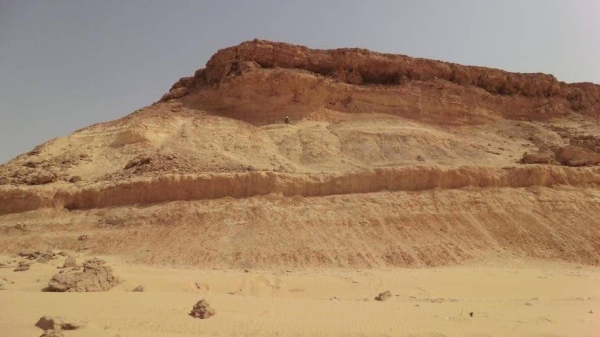
Saudi Gazette report
JEDDAH — Geological researchers from College of Marine Sciences at King Abdulaziz University (KAU as well as from the Fossil Department at the Saudi Geological Survey have carried out studies to determine the geological ages of mountain cliffs made of tender limestone in the northern part of the Kingdom, and these studies came to the conclusion that these mountains are estimated to be around 37 million-year-old.
The marine calcareous coccoliths fossils were used in a first-of-its-kind study and were published in the Journal of Applied Ecology and Environmental Research in its August 2020 issue. Coccoliths are individual plates of calcium carbonate formed by coccolithophores.
Coccolith fossils are minute stalactites of single-celled algal cells, and after their death and disintegration, they scatter their stalactite residues, which range in size from 3-30 micrometers. A micrometer is a unit of measurement of very small lengths, where 1 millimeter is 1000 micrometers.
Dr. Muhammad Hamdi Al-Jahdali, a member of the faculty at the Marine Geology Department at the KAU College of Marine Sciences, is considered to be the first Saudi to have participated in global exploration missions twice in a row on board the research ship Joides Resolution in the Pacific and the Caribbean while studying for his master’s and doctoral degrees at State University Florida. The State University has published his research on the Kingdom’s northern mountains by way of micro-collette marine fossils.
Al-Jahdali revealed that these mountains are semi-deep sediments that are 37 million years old, and these organisms appeared in the geological record about 200 million years ago. These are important tools in determining the geological ages of limestone sedimentary rocks in geological studies, given their concentration and density in marine geological systems of ages.
“Large parts of northern Saudi Arabia and neighboring countries were covered with semi-deep marine environments in the late Eocene period, that is, about 37 million years ago, when the micro-coccoliths were floating on the surface of the water, before their death and falling on the seabed in the form of limestone showers in the seas, which formed the limestone rocks, in addition to the coccolith fossils. Large marine fossils such as sea urchins are also present in the study area.